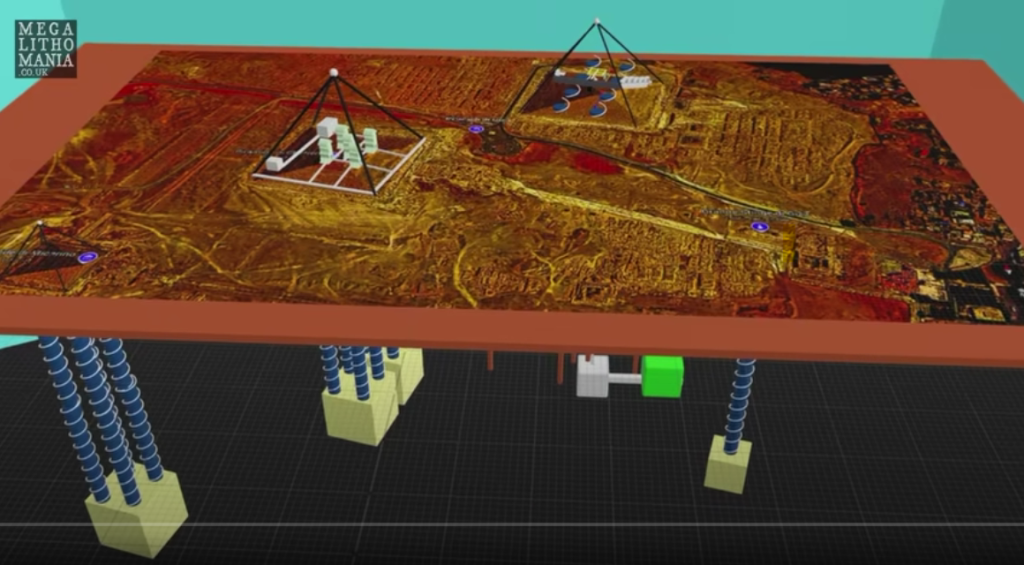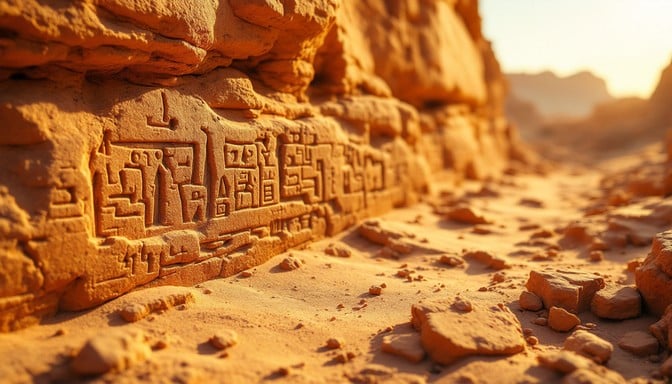Going Underground: Experts Clash Over ‘Hidden City’ Beneath Egypt Pyramids
A heated debate has erupted among Egyptologists following bold claims from researchers who say they’ve found an “underground city” beneath the Pyramids of Giza. Is the discovery groundbreaking— or an exaggerated interpretation of radar data?
Groundbreaking or Misleading?
Italian researcher Prof. Corrado Malanga (University of Pisa) and Filippo Biondi (University of Strathclyde, Scotland) claim to have uncovered a vast subterranean network beneath the Giza Plateau. Their study, initially released in 2022 and revisited in 2024, uses a modified Synthetic Aperture Radar (SAR) technique and proposes the existence of a deep, man-made structure below the Khafre Pyramid.
Dubbed The Khafre Project, the team asserts the presence of a massive limestone platform with eight vertical shafts spiraling downward into two cube-like structures—each approximately 90 meters per side—located nearly two kilometers beneath the surface. They further suggest the existence of a subterranean water system over 640 meters below ground.

Scientific Claims and Speculative Interpretation
Using a unique method that translates electromagnetic signals into phononic (sound-based) data, the team combined radar tomography with Doppler effect analysis. They argue this process enables them to “listen” to Earth’s internal vibrations, thereby building images from reflected radar signals similar to acoustic tomography.
Biondi explains their process involved step-by-step signal analysis:
- Range compression: Matching reference signals (chirps) with radar echoes to form focused imagery.
- Doppler history modeling: Leveraging satellite velocity to simulate communication channels and interpret subsurface structure.
Their software, according to Biondi, essentially extrapolates vibrations and reconstructs scans of subterranean features from satellite radar data—achieving what has traditionally been thought impossible for SAR beyond a depth of 10 meters.
The Controversy
Mainstream archaeologists remain unconvinced. Veteran Egyptologist Dr. Zahi Hawass dismissed the findings as “fantasy,” pointing to the extensive archaeological evidence already confirming that the pyramids were built by the ancient Egyptians during the Fourth Dynasty.
ESA (European Space Agency) confirmed that SAR can typically penetrate soil to a depth of only about 10 meters, and deeper insights must rely on indirect interpretations rather than direct imaging.
Despite that, Biondi and his team claim consistency in their findings across data from multiple satellites, including those operated by Capella Space and Amberspace.
Ancient Myths Resurface
The concept of a hidden city or the fabled “Halls of Amenti” beneath the pyramids is not new. It was famously promoted by American psychic Edgar Cayce in the 20th century, who claimed an ancient “Hall of Records” lies beneath the Sphinx, holding records from Atlantis.
Malanga and Biondi cautiously align with this legend, suggesting the possibility that the Khafre Pyramid conceals yet-undiscovered secrets—perhaps even this mythical library.
Fringe or Future Science?
Skeptics argue that the team’s interpretation verges on pseudoscience. Critics highlight the reliance on artistic liberties in processing and presenting tomographic data, and call for peer-reviewed, on-site verification. However, the team asserts their consistency across over 200 satellite scans supports the legitimacy of their findings.
The same SAR tomography method was previously used by Biondi to analyze large infrastructures like the Mosul Dam and Italy’s Gran Sasso Laboratory, though never applied at such depths or with this level of ambition.
Final Thoughts
While the mainstream view stands firm that the pyramids were constructed with remarkable but terrestrial tools, the enduring fascination with Ancient Egypt continues to invite new—and often controversial—theories. Whether this latest claim marks a turning point or simply another entry in a long line of speculative archaeology remains to be seen.
One thing is clear: the mystery surrounding Egypt’s ancient wonders is far from settled. And for curious minds—spurred by podcasts, documentaries, or dreams of lost civilizations—that’s part of the magic.
Did Tesla Predict This?
Some theorists have revived Nikola Tesla’s century-old idea that the pyramids were not tombs, but massive energy transmitters. If structures beneath the Khafre Pyramid do exist and can be linked to electromagnetic activity, it might echo Tesla’s vision more than a millennium after the pyramids were built.
The archaeologists (yep, the real archaeologists) who found it didn’t seem to consider it potentially paradigm-shifting, simply “interesting weird structures that need to be studied when an opportunity arises.”
In other words when something new is discovered it doesn’t look like this breathless, incredible structures to be closely examined, but rather sober and knowledgeable folks saying to other sober and knowledgeable folks “hey, check this out. We better check this our closer later.”
Editor’s Note: This article explores a developing story that involves emerging technologies and fringe interpretations. While intriguing, these claims should be approached with both curiosity and critical scrutiny.





